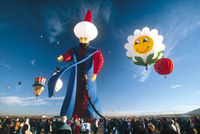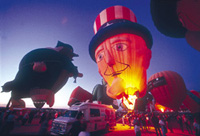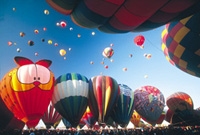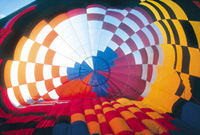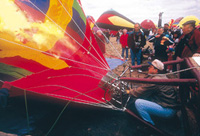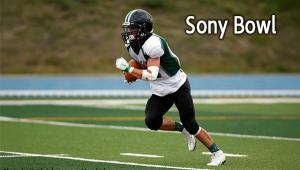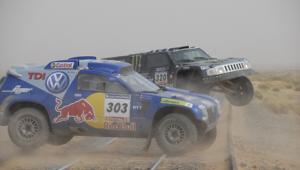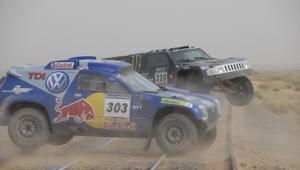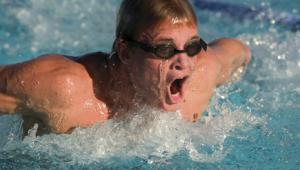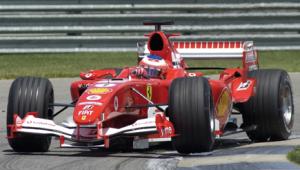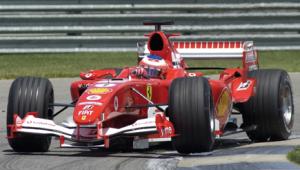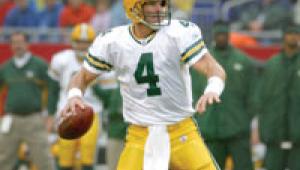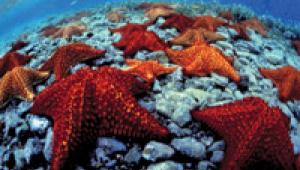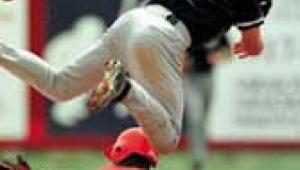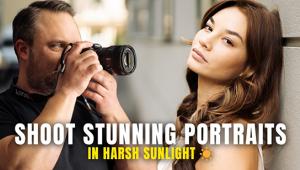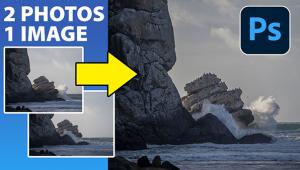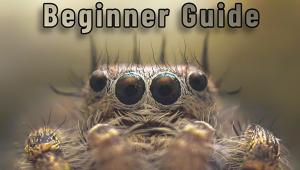High Flying
Photograph The Fun At Balloon Festivals
Dozens of ballooning events are held around the country throughout the year. No doubt one is held not too far from your hometown. "Shutterbug" contributor Rick Sammon has been shooting balloon festivals for five years. His favorite is the Kodak Albuquerque International Balloon Fiesta, held each October in, you guessed it, Albuquerque, New Mexico. Here is a quick recap of his experience at the 2000 event. Learn from his experiences and try his tips. You'll be on your way capturing all the magic of a balloon festival. It is 4:30am. The phone in my hotel room rings."Good morning. This is your wake-up call" So, tired as I am, I must get up. I have to get to the launching field to catch and capture the action, color, and excitement of the world's largest ballooning festival: the Kodak Albuquerque International Balloon Fiesta, an annual event held each October in Albuquerque, New Mexico. |
|||
Dawn Patrol I'm up and out in a flash. I make it to the field in time to have a Breakfast Burrito and cup of coffee before the first balloon is inflated. Yummy! The first Dawn Patrol balloon starts to glow at one end of the field. I'm on the run. In these relatively low-light conditions, I'm shooting Kodak Ektachrome 200 pushed to EI 640--the Kodak recommendaton for a two-stop push. This film speed lets me shoot at about 1/60 of a sec--fast enough to hand hold my 17-35mm f/2.8 lens. I see lots of other photographers shooting with their cameras mounted on tripods--presumably shooting with slower film. But I like to be mobile and not locked into one position. The tradeoff, which I think is worth it, is pictures with a bit of grain. |
|||
Because the light intensity changes quickly inside the balloons (technically called the envelopes) as the burners are turned on and off, I bracket my shots in one-stop increments, taking exposures over and under the recommended automatic setting. This way, I'm bound to get at least one good exposure out of three. The balloons take off. The wind is okay. The big event of the day, the mass ascension of 400 hot-air balloons, will begin at 7am. I set up my gear for daylight shooting. I have a Canon EOS-1 V with a 17-35mm on one shoulder. I'll shoot Ektachrome E100SW and Kodachrome 64 with this rig. On my other shoulder is my Canon EOS-3 with a 70-200mm lens. In this setup I'll shoot Ektachrome 200. My two-camera system lets me "tell the story" of the event--with balloon and field pictures. My most important accessory is my polarizing filter. It darkens the sky (when the sun is off to my side) and lets the balloons stand out in my pictures. I have lots of film and extra batteries stuffed in the pockets of my ExOfficio photo jacket. This gives me quick access to the stuff I need. |
|||
Liftoff Whistles blow. They are off--into a cloudless sky. I have about an hour to shoot before the last balloon takes off. After about 8am, the air is too warm for liftoff. The action happens fast. Balloons are lifting off all around me. I have to shoot fast. To capture the fabulous colors of the balloons, I shoot with the sun at my back or side; shooting into the sun would result in dull colors and perhaps a silhouette. I'm also photographing the people on the field--the balloon pilots, their crews and onlookers. Again, I'm trying to "tell the story" of the festival, something I try to do at all the events I photograph. Simple as it may sound, I'm thinking about vertical and horizontal shots--something some of the other shooters on the field are not doing. With horizontals and verticals, I'll have a better chance of getting my pictures published, because I'll give editors more layout options. |
|||
I shoot for about two hours, bracketing my pictures to ensure a good exposure. I shoot about 20 rolls of film. I think I have what I need, for now. The sky begins to clear of balloons, folks are leaving the field. The Breakfast Burrito stands are closing down. The good picture opportunities are over. It's "downtime" on the field. Time to go back to the hotel and get some shuteye before the Balloon Glow at about 6pm. It's 4:30pm. The phone in my hotel room rings. "Good afternoon. This is your wake-up call, " Well rested after a good snooze, I'm off again to the field to photograph the Balloon Glow--a dusk event when the pilots of about 50 balloons, tied to the ground, simultaneously light their burners, creating a beautiful glow inside the envelopes. It's back to fast film to capture these scenes. This time, because there is still some light in the sky, I'm shooting E200 at EI 640. I bracket my exposures in one-stop increments to ensure a good exposure. I get some more good shots. I'm happy with the day's shooting. Still, I'll return to the field for three more days of the 10 day event--for more action, color, and excitement. |
|||
Where To Go You can also reach these folks at: Balloon Federation of America, Sharon Ripperger - Office Manager, PO Box 400, Indianola, IA 50125; (515) 961-8809; fax: (515) 961-3537. Rick's Balloon Festival Shooting Gear |
